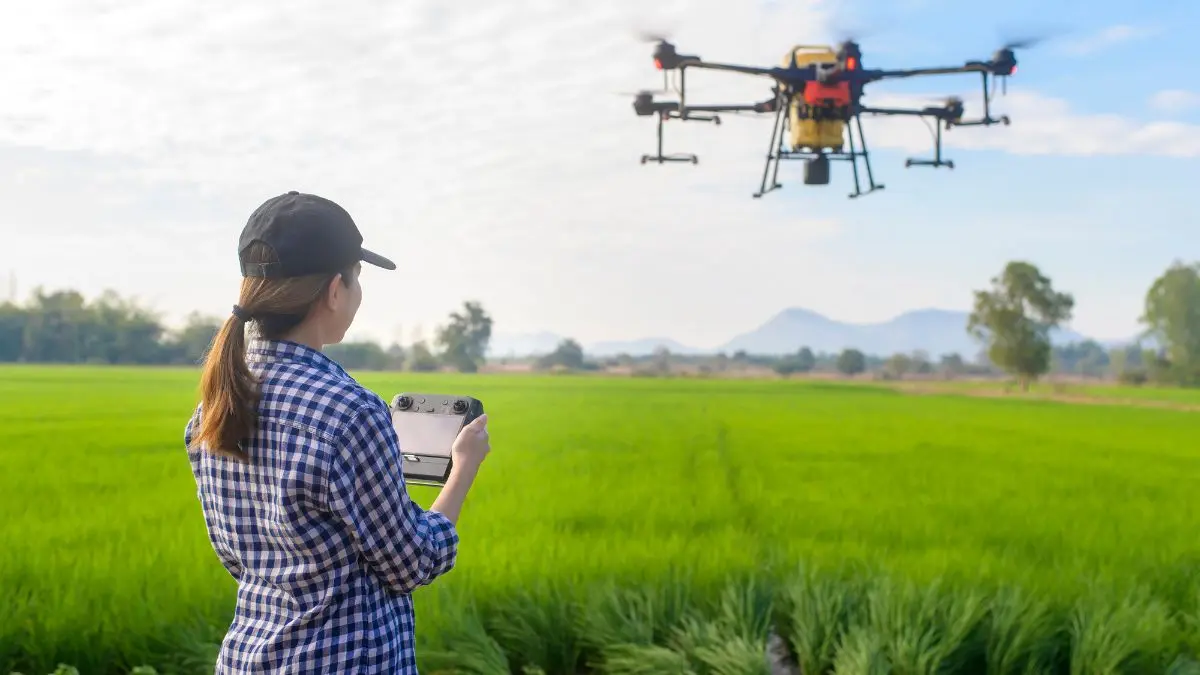Agricultural Drones: Transforming Farm Management from the Sky

In today’s fast-evolving world, agriculture is undergoing a significant transformation, thanks to the introduction of agricultural drones. These high-flying helpers are changing the way farmers manage their crops and land. This technology is not just a fancy gadget; it’s a practical tool reshaping traditional farming methods. From monitoring vast fields effortlessly to precisely applying resources, drones are opening up new possibilities and making farm management more efficient and sustainable.
Drones in Agriculture: A New Perspective on Crop Management
The advent of drones in agriculture has brought a revolutionary change to crop management. These flying devices offer a bird’s-eye view of farmlands, enabling farmers to observe and analyze their crops like never before. With the ability to cover large areas quickly, drones provide detailed insights into crop health, soil conditions, and more. This aerial perspective helps farmers make informed decisions, leading to more efficient and effective farming practices.
Drones are not just about overseeing fields; they’re also about detailed data gathering. Equipped with advanced sensors, they can detect issues such as pest infestations, nutrient deficiencies, and water stress. This level of precision allows for targeted interventions, ensuring that crops get exactly what they need, when they need it, reducing waste and maximizing yield.
Precision Farming: How Drones Make Every Drop Count
Precision farming has taken a significant leap forward with the integration of drones. These high-tech helpers are revolutionizing how resources are allocated in agriculture. By providing precise data on crop health and soil conditions, drones enable farmers to apply water, fertilizers, and pesticides in a targeted manner. This not only ensures that every drop and granule is used effectively but also minimizes environmental impact.
The impact of this precision is profound. Water conservation is one of the most critical aspects, especially in arid regions. Drones help in identifying areas that require more or less irrigation, promoting efficient water usage. Similarly, by pinpointing specific areas that need treatment, drones reduce the overall use of fertilizers and pesticides, leading to cost savings and reduced chemical runoff.
Mapping and Monitoring: The Eye in the Sky for Healthy Crops
Drones are transforming agricultural monitoring and mapping. By capturing high-resolution images, these unmanned aerial vehicles provide a comprehensive overview of crop health and land conditions. This data is invaluable for farmers, enabling them to track growth, detect diseases, and identify areas that require attention. The speed and frequency with which drones can survey fields surpass traditional ground-based methods, offering real-time insights and quicker response times.
Furthermore, drones are instrumental in creating detailed maps of farmland. These maps are not just static images; they are dynamic tools that help in understanding crop cycles, planning planting patterns, and managing resources more efficiently. By regularly updating these maps, farmers can observe changes over time, allowing for proactive management and adaptation to varying conditions.
The Environmental Impact: Drones Leading the Way to Sustainability
The role of drones in promoting environmental sustainability in agriculture is increasingly recognized. By enabling precise application of resources, drones significantly reduce the ecological footprint of farming. For instance, targeted pesticide application minimizes the amount of chemicals released into the environment, protecting not just the crops but also the surrounding ecosystem.
Moreover, drones contribute to soil preservation and reduce water pollution. By providing data on soil health and moisture levels, they guide farmers in adopting practices that maintain soil integrity and prevent over-irrigation. This approach not only conserves vital resources but also helps in maintaining the long-term viability of farmlands. In essence, drones are not just farming tools; they are stewards of environmental health.
The Future of Farming: Integrating Drones into Modern Agriculture
The future of farming is being reshaped by the integration of drones into agricultural practices. As technology advances, the capabilities of these drones continue to expand, offering even more possibilities for farm management. From automated planting to harvesting, drones are expected to play a central role in the entire agricultural cycle. This evolution signifies a shift towards more automated, efficient, and sustainable farming methods.
The potential of drones extends beyond just practical applications. They also hold the promise of making farming more accessible and manageable, especially for small-scale farmers. By reducing the need for extensive labor and resources, drones make advanced farming techniques feasible for a broader range of farmers. As we move forward, drones are set to become an indispensable part of modern agriculture, paving the way for a more productive and sustainable future in farming.

